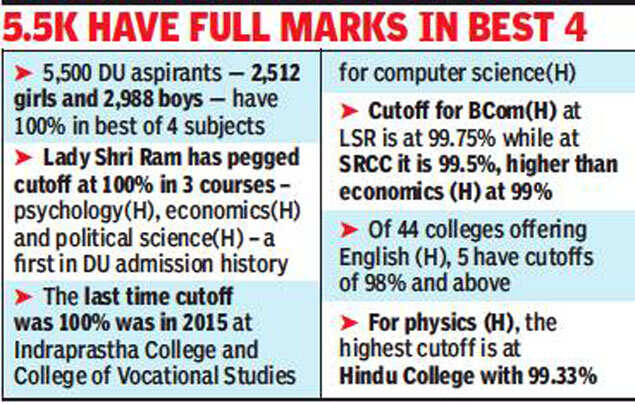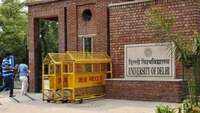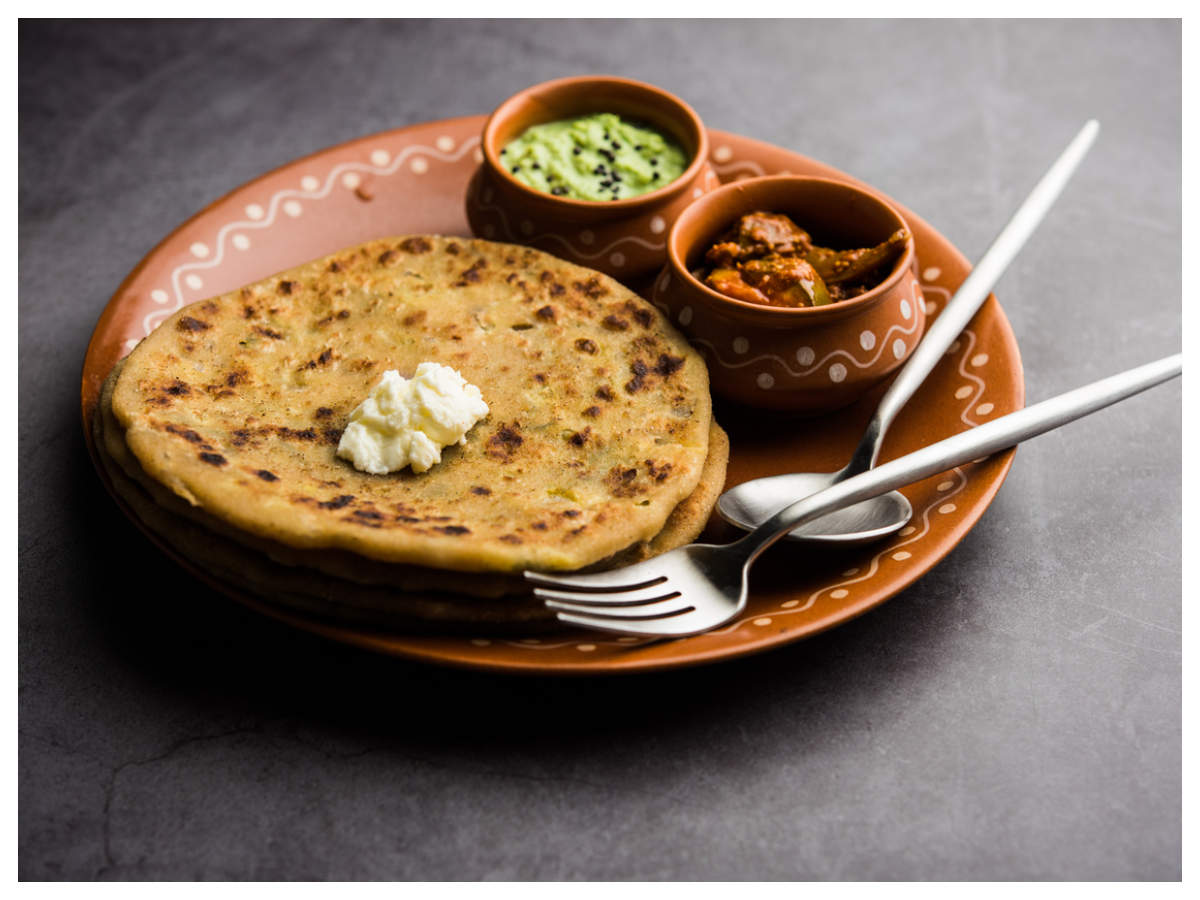
NEW DELHI: Perhaps it was inevitable. After the Covid-19 pandemic upended Class 12 exams and led to unprecedented measures to mark the students, 1.6% of those applying to Delhi University for admission this year, or 5,500 students, finished with a perfect 100 in the required aggregate of four subjects. Not surprisingly, the cutoff marks for admission into various courses, announced on Saturday, showed an upward revision from last year of at least one percentage point, particularly for popular courses like BCom (H), economics, political science, physics and mathematics.
How tough admission in DU is going to be this year is exemplified by Lady Shri Ram College’s bar of 100% for honours courses in psychology, economics and political science, the last demand for a 100% cutoff having come in 2015 for computer science (H) at Indraprastha College and College of Vocational Studies. With 2,512 girls and 2,988 boys who scored 100% in their best four vying for DU seats, a 99% cutoff is the acceptable normal this year. DU’s 61 colleges offer 67,000 seats for various courses, while the university has received 3,54,003 applications for admission.

MISSION ADMISSION
BCom(H) cutoff at all-time high
College principals attributed the upward spiral to several factors, first the doubling from 17,693 last year to 38,686 in the number of CBSE students scoring 95% and above in the Class XII board exams. Also, as many as 1,57,934 students scored 90% and above against 94,299 in 2019, a 67.5% rise. Second, the colleges are exercising caution to avoid overadmission in the first list given the registration form this year did not give students the choice of course, making them eligible for admission to any courses.
Under the circumstances, the colleges were hard put to lower the eligibility benchmarks. Lady Shri Ram, for instance, offers just 14 seats for psychology (H) in the general category and couldn’t have opened it up with a cutoff lower than 100%.
Suman Sharma, principal of LSR, explained, "The cutoff for a particular course is decided after analysing the profile of the applicants. In addition, several local factors are also considered, including the number of seats being offered for that course in the college.”
This year, the cutoff for BCom (H) is at an alltime high in most colleges. At LSR, it is 99.75%. For a coveted seat at Shri Ram College of Commerce (SRCC), one needs a higher percentage for BCom (H) than for economics (H), with the former accessible only to those with a 99.5% aggregate against 99% for economics (H).
Overall, of the 54 colleges offering BCom (H), 13 have pegged the cutoff at 98% and above. For English (H), five of the 44 colleges offering the subject have a qualifying mark of 98%. And those eyeing an economics (H) seat need 98% or above for admission to 14 of the 38 colleges where the course is taught.
The marks for political science, too, have been steadily rising over the years. Last year, Hindu College had pegged the cutoff at 99%. This year, Hindu, Kirori Mal, Miranda House and Ramjas all have 99% as the benchmark in the first list. Last year, Hindu had more students applying than seats available even at a cutoff of 99%.
The cutoffs have risen for science subjects too. Out of the 25 colleges that offer physics (H), five have marked 98% or more as the cut point. The highest cutoff for the course is at Hindu College with 99.33%, a jump of a percentage point from last year. In mathematics (H), the top cutoff is 99% at the same college, and of the 41offering the course, 10 require aggregates of over 97% for a shot at admission.
Even off-campus colleges have raised the bar. At Deen Dayal Upadhyaya College, for instance, the qualifying marks for BCom (H), physics and mathematics (H) have gone up by a percentage point since 2019 to 97% this year.
S P Agarwal, principal of Ramanujan College in south Delhi, said colleges needed to be careful this year. “We are worried about overadmission. We also have no specific data of the number of applications in individual courses this year so we had to take the precautionary measure of high cutoffs.”
How tough admission in DU is going to be this year is exemplified by Lady Shri Ram College’s bar of 100% for honours courses in psychology, economics and political science, the last demand for a 100% cutoff having come in 2015 for computer science (H) at Indraprastha College and College of Vocational Studies. With 2,512 girls and 2,988 boys who scored 100% in their best four vying for DU seats, a 99% cutoff is the acceptable normal this year. DU’s 61 colleges offer 67,000 seats for various courses, while the university has received 3,54,003 applications for admission.

MISSION ADMISSION
BCom(H) cutoff at all-time high
College principals attributed the upward spiral to several factors, first the doubling from 17,693 last year to 38,686 in the number of CBSE students scoring 95% and above in the Class XII board exams. Also, as many as 1,57,934 students scored 90% and above against 94,299 in 2019, a 67.5% rise. Second, the colleges are exercising caution to avoid overadmission in the first list given the registration form this year did not give students the choice of course, making them eligible for admission to any courses.
Under the circumstances, the colleges were hard put to lower the eligibility benchmarks. Lady Shri Ram, for instance, offers just 14 seats for psychology (H) in the general category and couldn’t have opened it up with a cutoff lower than 100%.
Suman Sharma, principal of LSR, explained, "The cutoff for a particular course is decided after analysing the profile of the applicants. In addition, several local factors are also considered, including the number of seats being offered for that course in the college.”
This year, the cutoff for BCom (H) is at an alltime high in most colleges. At LSR, it is 99.75%. For a coveted seat at Shri Ram College of Commerce (SRCC), one needs a higher percentage for BCom (H) than for economics (H), with the former accessible only to those with a 99.5% aggregate against 99% for economics (H).
Overall, of the 54 colleges offering BCom (H), 13 have pegged the cutoff at 98% and above. For English (H), five of the 44 colleges offering the subject have a qualifying mark of 98%. And those eyeing an economics (H) seat need 98% or above for admission to 14 of the 38 colleges where the course is taught.
The marks for political science, too, have been steadily rising over the years. Last year, Hindu College had pegged the cutoff at 99%. This year, Hindu, Kirori Mal, Miranda House and Ramjas all have 99% as the benchmark in the first list. Last year, Hindu had more students applying than seats available even at a cutoff of 99%.
The cutoffs have risen for science subjects too. Out of the 25 colleges that offer physics (H), five have marked 98% or more as the cut point. The highest cutoff for the course is at Hindu College with 99.33%, a jump of a percentage point from last year. In mathematics (H), the top cutoff is 99% at the same college, and of the 41offering the course, 10 require aggregates of over 97% for a shot at admission.
Even off-campus colleges have raised the bar. At Deen Dayal Upadhyaya College, for instance, the qualifying marks for BCom (H), physics and mathematics (H) have gone up by a percentage point since 2019 to 97% this year.
S P Agarwal, principal of Ramanujan College in south Delhi, said colleges needed to be careful this year. “We are worried about overadmission. We also have no specific data of the number of applications in individual courses this year so we had to take the precautionary measure of high cutoffs.”

Coronavirus outbreak
Trending Topics
LATEST VIDEOS
City
 On cam: Punjab girl bravely fights off bike-borne purse snatchers
On cam: Punjab girl bravely fights off bike-borne purse snatchers  Ahmedabad: Dalit woman from a village in Banaskantha district molested by six
Ahmedabad: Dalit woman from a village in Banaskantha district molested by six  Shocking: 18-year-old beaten to death in Delhi over his friendship with a woman
Shocking: 18-year-old beaten to death in Delhi over his friendship with a woman  Sexual assault on women: MHA issues advisory to states for ensuring mandatory action by police
Sexual assault on women: MHA issues advisory to states for ensuring mandatory action by police
More from TOI
Navbharat Times
Featured Today in Travel
Get the app





